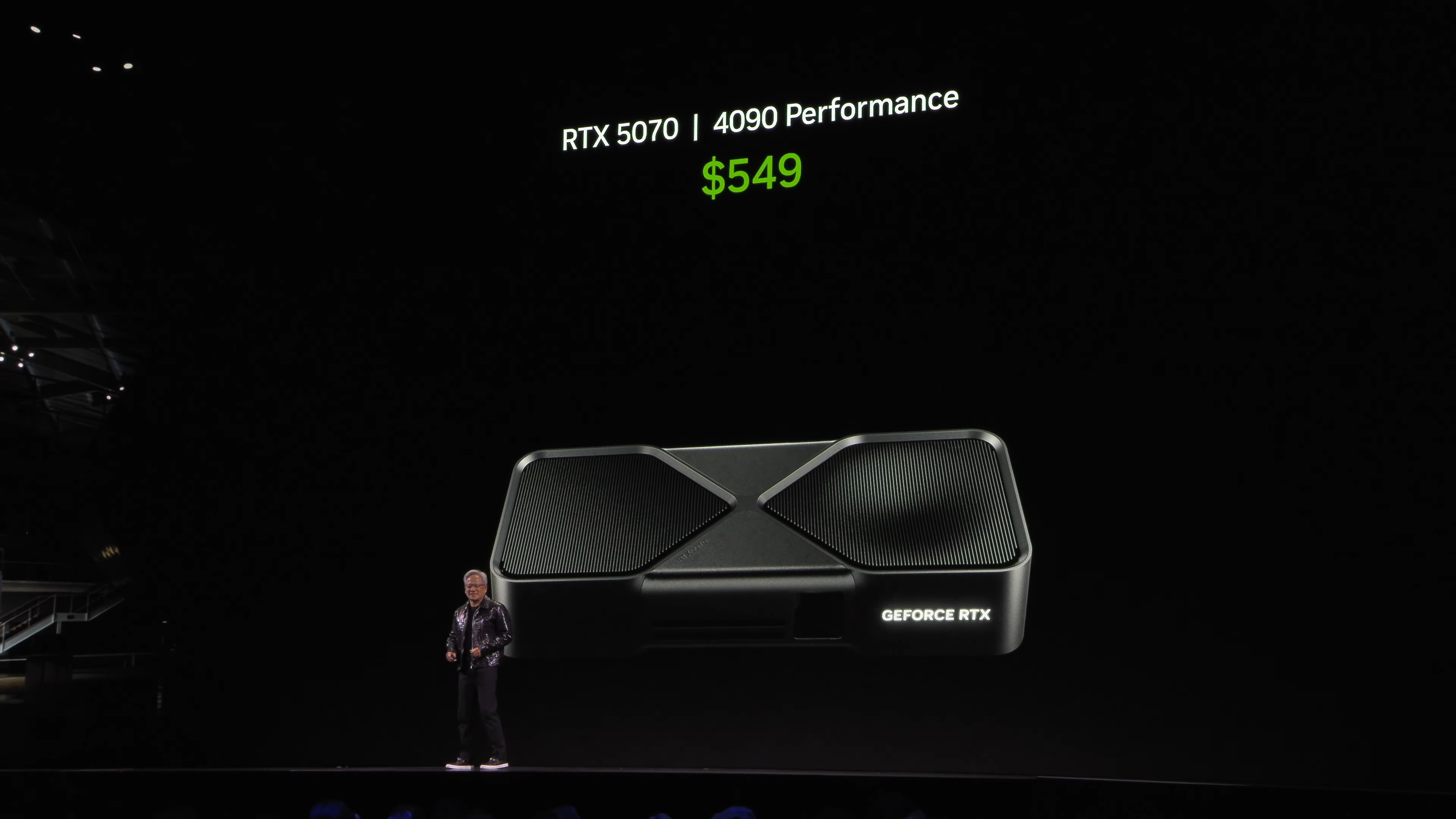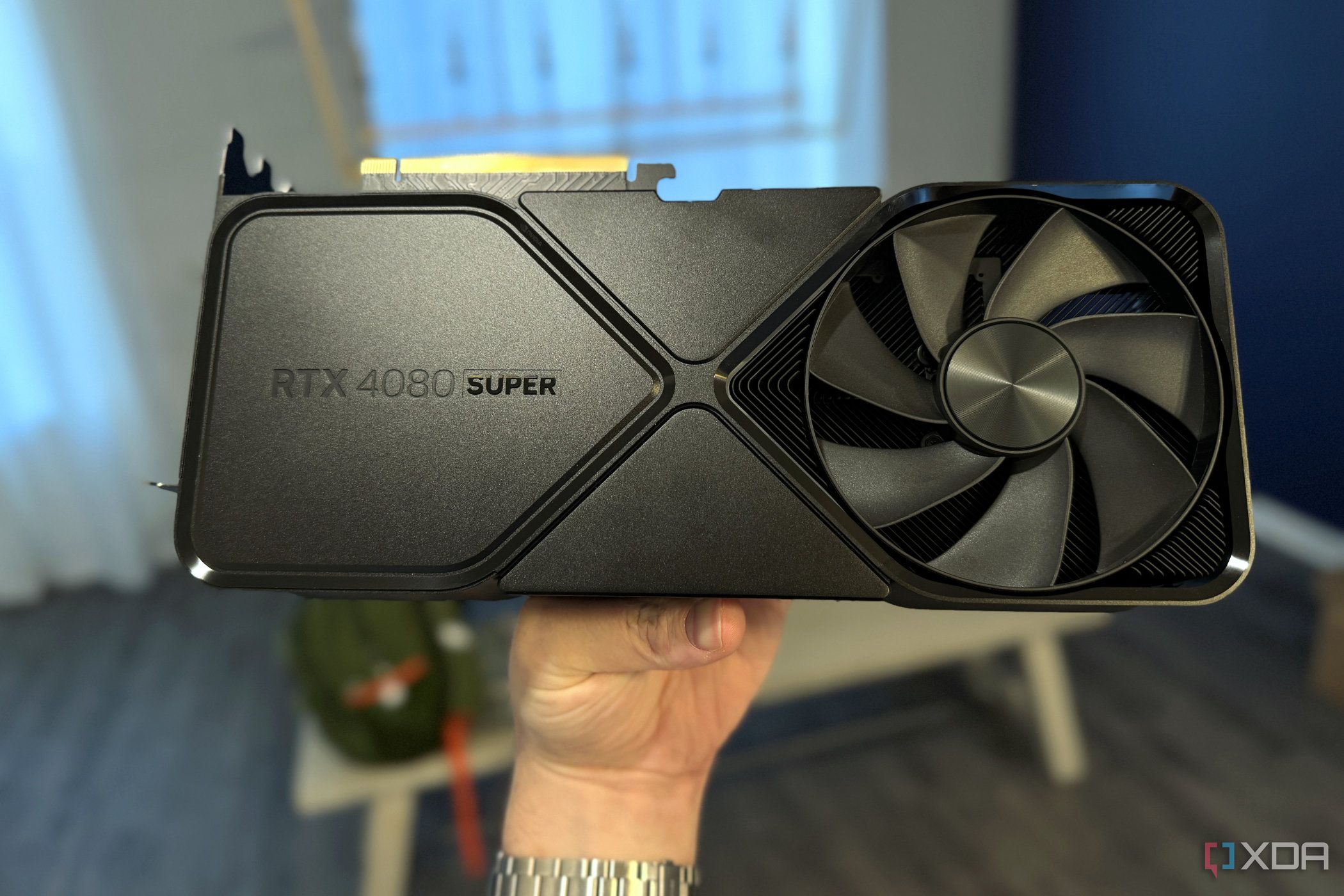It's no secret that GPU demand has increased significantly in recent years, and Nvidia holds a massive chunk of the market share with no competition in the high-end segment. Gamers have been incredibly loyal to the company's products, not just for their raw performance, but also for cutting-edge features explicitly tailored to gaming. Yet, Nvidia's launch of the RTX 50-series arguably goes down as the worst GPU launch in history. So, you may wonder how Nvidia messed this up.
For starters, Nvidia isn't just a graphics company anymore. And that's not coming from me; that's coming directly from Nvidia's Founder and CEO, Jensen Huang. I don't blame him, though. A company that's on top of the world in AI computing surely has less incentive to prioritize gaming. I don't mind a shift in focus, but the way Nvidia launched its RTX 50-series GPUs clearly shows that it treats gamers and PC enthusiasts as second-class consumers, which is a big red flag.

Related
Nvidia's RTX 50 series is disappointing, and we are the ones to blame
We might be mad at Nvidia for the RTX 50 series, but we're the real culprits here.
AI features take center stage
Nvidia just can't stop boasting about its AI prowess
Nvidia loves to talk about AI, but it gets annoying when it's used to mask generational hardware improvements. Remember when Jensen Huang proudly claimed that the RTX 5070 could match the RTX 4090's performance with the help of AI? Although features like DLSS Super Resolution and Frame Generation help push frame rates like never before, they're just clever software tricks that hide hardware stagnation. Using these features also has its fair share of drawbacks, like visual artifacts, ghosting, and increased latency, but Nvidia doesn't seem to care about all that.
Nvidia's focus has shifted from GPUs that push more frames to ones that train large language models. You can take a look at Nvidia's product page for the RTX 50-series to get a better idea. Why mention Nvidia ACE, an AI suite that matters more to developers than gamers, when marketing consumer-grade GPUs? The RTX 50-series' improvements in machine learning may excite AI developers and businesses, but gamers will find these upgrades negligible or irrelevant. It seems like Nvidia wants its gaming graphics cards to double as productivity powerhouses so that it appeals to the broader market.
Nvidia is engaging in price gouging
High-end GPU prices are out of reach for most gamers
Remember when you could buy a flagship gaming graphics card for under $1,000? For reference, the GTX 1080 Ti launched at $699 in 2017, whereas the RTX 2080 Ti launched with an MSRP of $999 a year later. Fast forward to 2025, and Nvidia is charging $1,999 for its top-end GPU, the RTX 5090. That's a 25% price increase over the RTX 4090, which launched at $1,599 in 2022. The performance improvements over the RTX 4090 aren't significant enough to justify this price increase, so why is the pricing so out of touch with reality?
Well, Nvidia knows that it can get away with charging absurd prices for its GPUs for two reasons. First, there's a huge demand for GPUs due to AI innovation, so it will have no trouble finding buyers. Second, Nvidia has no competition in the high-end segment. AMD's best offering in early 2025 is the RX 9070 XT, which trades blows with the RTX 5070 Ti. If Nvidia really cared about gamers, the RTX 5090's MSRP would've closely matched its predecessor. And if you think Nvidia provides value in the budget segment, think again, because the company seems adamant on selling GPUs with 8GB of VRAM, which isn't adequate to run modern AAA titles at higher resolutions.
Nvidia's graphics drivers are getting worse
Driver support used to be one of Nvidia's biggest strengths
Not so long ago, Nvidia fans used to swear by its driver support, but that's not the case in 2025. People who were lucky enough to get their hands on an RTX 50-series graphics card aren't having a great time gaming on them because Nvidia's latest drivers are having stability issues across various games. The situation is so bad that even game developers are now telling people not to install the latest Nvidia drivers because they cause occasional frame drops, stuttering, and black screens.
Nvidia's reduced focus on driver optimization shows that it doesn't care about gamers as much as it used to. Gamers like me who were used to tangible performance improvements through Nvidia's driver updates now sacrifice stability to take advantage of new features like DLSS 4. It almost seems like Nvidia views game-specific optimization as an unnecessary effort, considering how much money it makes in the AI space to please its shareholders.
Nvidia's AI-driven approach may benefit gamers in the long run
It's clear that Nvidia's priorities have shifted in recent years, but it's hard to overlook the fact that the company still leads in graphics innovation. Its biggest rival, AMD, isn't close to matching the performance of Nvidia's offerings in the high-end segment. So, even though Nvidia doesn't care much about gamers anymore, we have no option but to choose Nvidia GPUs for the best possible gaming performance. Nvidia's lead in AI computing has paved the way for features like DLSS upscaling and frame generation, which is now more of a necessity than a luxury. So, who knows what tricks the company could come up with in the future to push gaming forward? But for now, Nvidia's AI-driven approach seems to benefit Wall Street more than PC enthusiasts.

Related
Here's what I'm going to do instead of upgrading to an Nvidia RTX 50 GPU
Nvidia's RTX 50 series isn't for me, but I have 3 alternatives to consider
.png)











 English (US) ·
English (US) ·